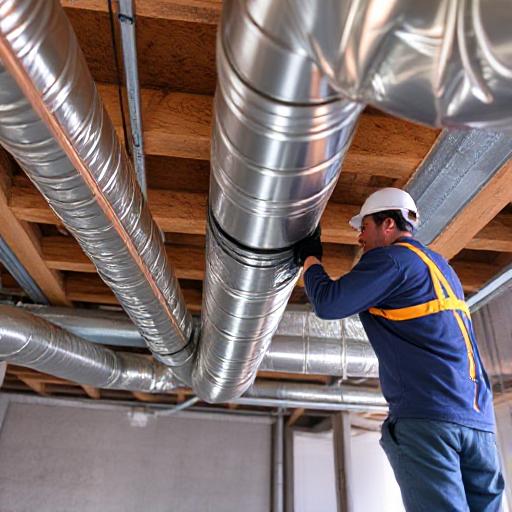Minimizing Risk During HVAC Ductwork Installation
Hey there HVAC pros! Ductwork installation can be a tricky business, with plenty of potential hazards lurking around every corner. But fear not! We’re here to help you navigate these risks and ensure a safe and smooth installation process. In this post, we’ll explore key strategies for minimizing risks during HVAC ductwork installation, from fall protection to electrical hazard prevention. Let’s dive in!
Understanding the Risks: Why Safety Matters
Did you know that falls are the leading cause of injuries during HVAC ductwork installations? Many accidents stem from ladder or aerial lift mishaps. It’s crucial to undergo proper OSHA fall arrest training to keep yourself safe. Plus, the injury rate for HVAC technicians is among the highest across all professions, with hazards like sprains, strains, electrical shocks, and lacerations being all too common. This makes understanding and mitigating risks even more important.
Key Safety Practices for HVAC Ductwork Installation
Fall Protection During Duct Installation
Falls can be deadly, but they’re also preventable. Always use safety harnesses and ensure your ladders and lifts are secure. Regular inspections and maintenance of your equipment go a long way in preventing accidents.

Electrical Hazard Prevention
Electrical hazards are a serious threat. Remember, approximately 1,000 deaths annually result from electrical injuries in HVAC work. Before you start, ensure that the power is shut off and use nonconductive gloves when interacting with wiring or metal ducting.
Manual Handling and Lifting
Handling heavy duct materials? Use proper lifting techniques and structural support gear to avoid strains and back injuries. Your body will thank you!
- Always lift with your legs, not your back.
- Utilize dollies or carts for heavy loads.
- Work with a partner whenever possible.
Ensuring Compliance and Quality in Ductwork Installation
Adhering to HVAC Ductwork Compliance Codes
Proper installation is crucial, and you’d be surprised to know that 90% of HVAC systems are installed incorrectly! Avoid common errors by following installation standards and ensuring ducts are free of kinks or sharp bends.
Preventing Ductwork Fire Hazards
Fire hazards can arise from improper handling of refrigerants or pressurized gases. Always adhere to safety data sheets and ensure proper ventilation when working with materials like ASPEN REFRIGERANTS R454b.
Before installation, always inspect your working area for potential electrical hazards and ensure all tools are used according to best safety practices. This proactive approach will help in minimizing risks and ensuring a safe installation environment.
FAQs on Safe HVAC Duct Installation Practices
How can I minimize HVAC installation risks?
By following proper safety protocols, using the right protective gear, and staying informed about potential hazards, you can significantly reduce risks during installation.
What are the common electrical hazards during ductwork installation?
Common hazards include live wires and faulty equipment. Always ensure the power is off before starting work and use appropriate protective gear.
Why is fall protection important in duct installation?
Falls are a leading cause of injuries in the HVAC industry. Using safety equipment like harnesses and secure ladders can prevent accidents.
How can I prevent mold in HVAC ductwork?
Ensure proper ventilation and regular maintenance of your HVAC system to prevent moisture build-up, which can lead to mold growth.
What are the benefits of using proper HVAC duct material selection?
Choosing the right materials ensures durability and efficiency, reducing the risk of leaks and system failures.
By following these guidelines and staying vigilant, you can minimize risks during HVAC ductwork installation and keep yourself safe. Remember, safety always comes first!
Ready to enhance your HVAC safety practices? Stay informed, stay safe, and keep those installations flawless!

